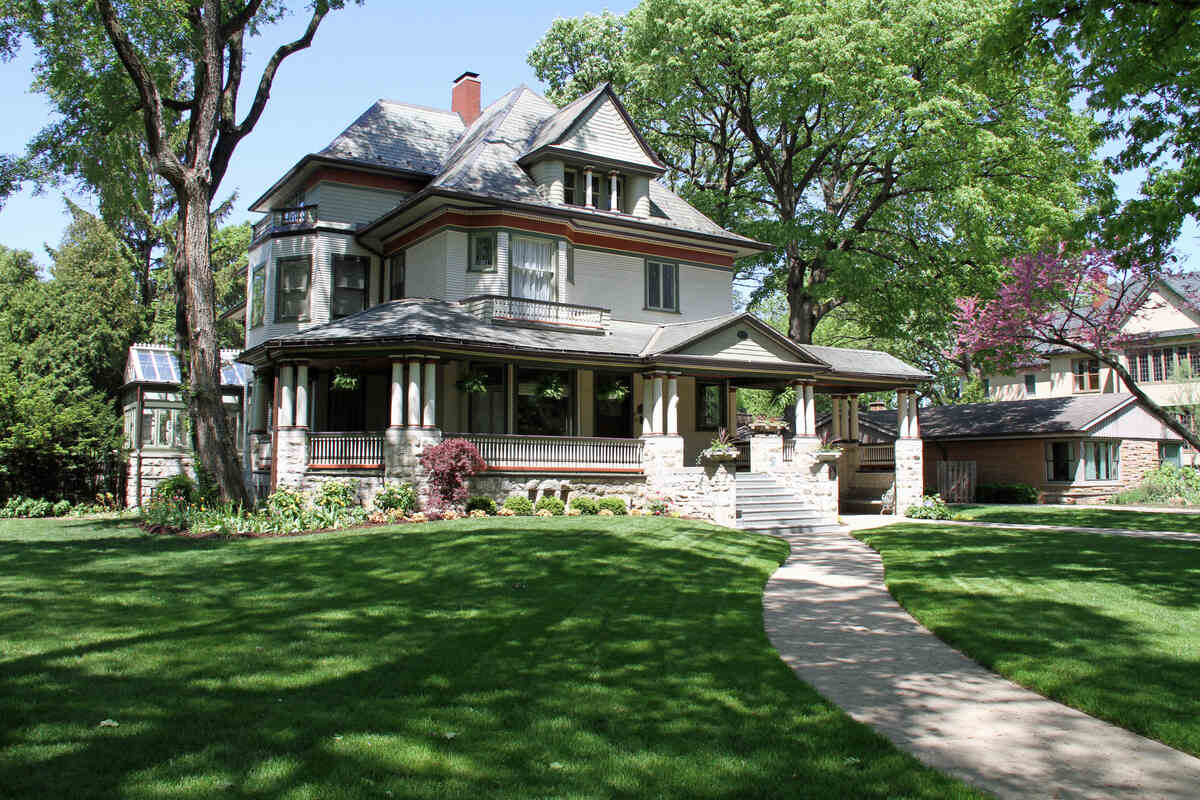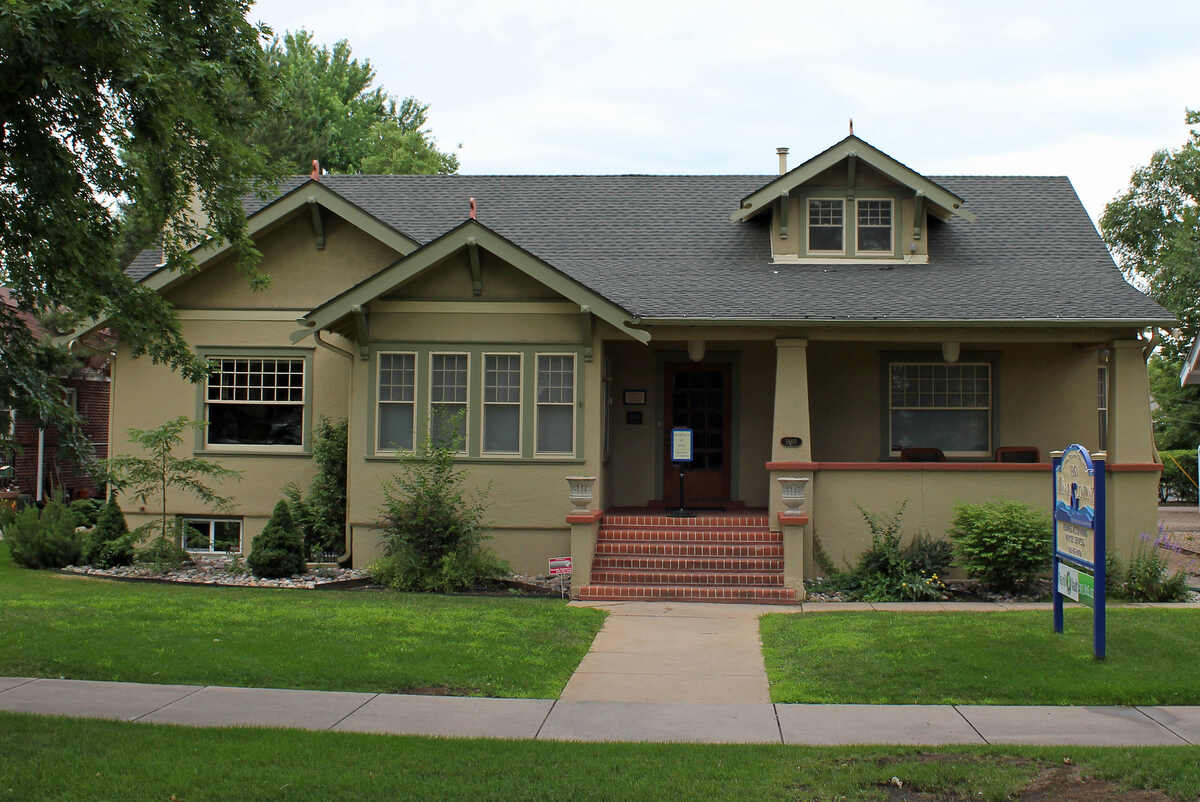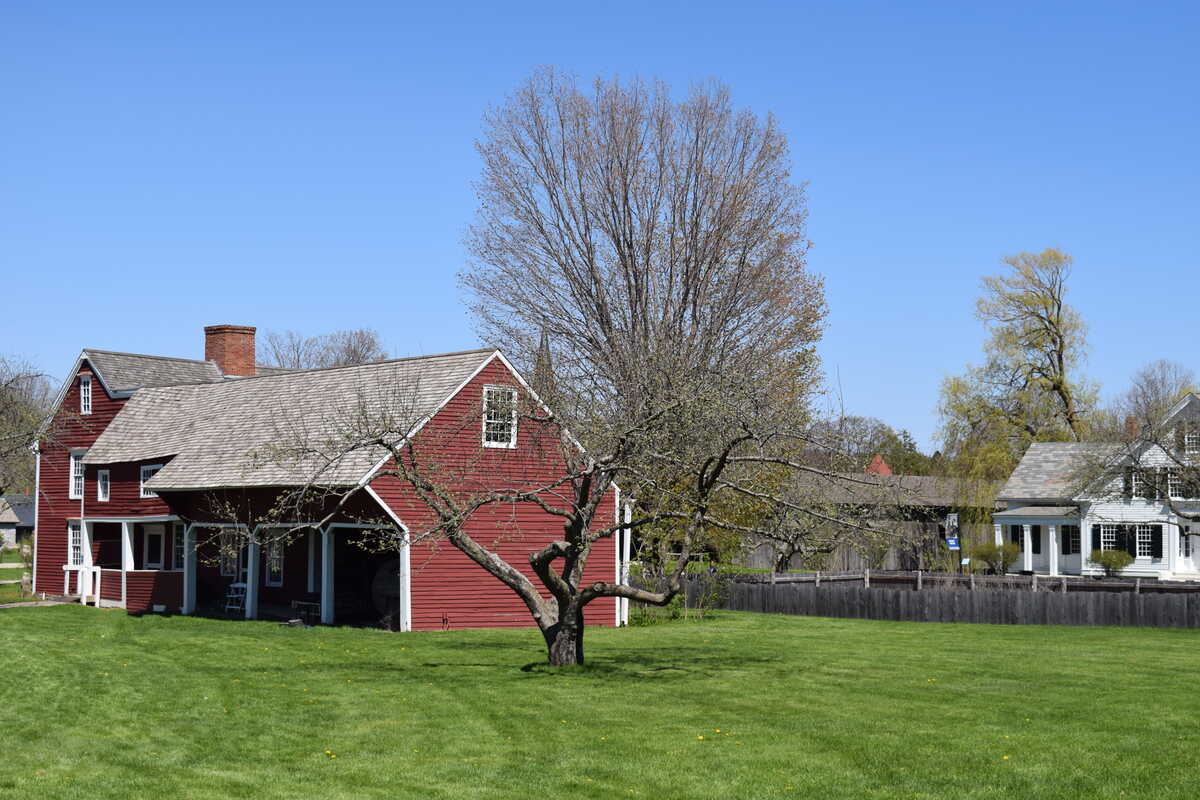
Long winters, short summers: That is the climate in Vermont, not to get all (maple) syrupy about it. But you have to take it into account when it comes to determining the best grass seed for Vermont. We’ll describe which grass types are best suited for sun, shade, foot traffic, and anything else Vermont can throw at your Green Mountain State lawn.
If you’re busy enjoying the fleeting summer months, or running out the door for a fun winter adventure, check out our quick decision guide on how to select the best grass type for Vermont.
Grass Growing Zone for Vermont
Vermont is firmly in the cool-season grass growing zone. With its cold winters and mild summers, the cool-season grasses are your best bet.
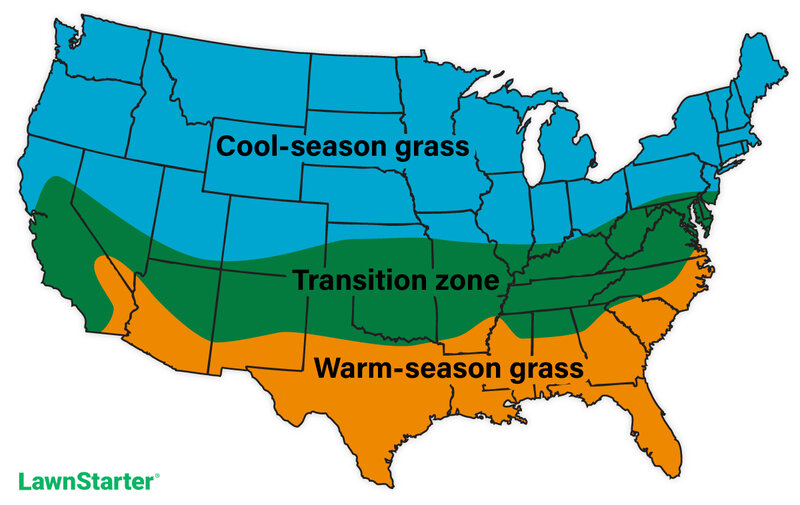
The Best Grasses for Vermont: Cool-Season
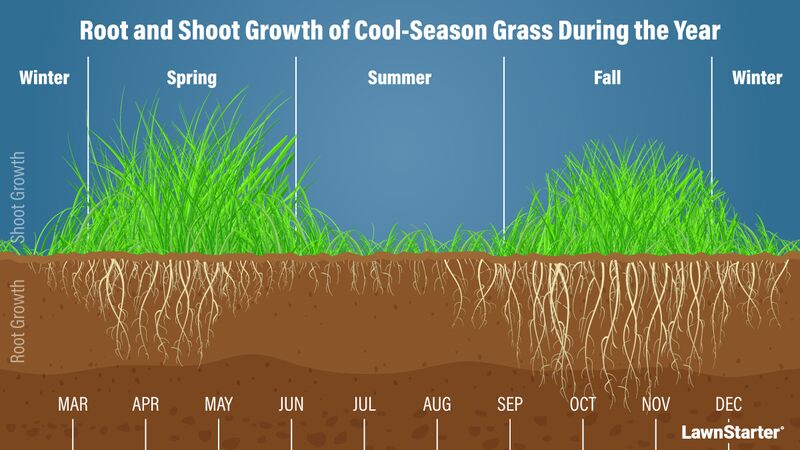
Kentucky Bluegrass

Photo Credit: Shutterstock
Kentucky bluegrass both handles the cold and foot traffic better than other grasses, making it a popular choice for use in Vermont homes and ballfields.
But it doesn’t do well in the shade, a problem if you have trees (something ballfields do not have to worry about) or fences. It is also susceptible to such diseases as leaf spot, dollar spot, and summer patch
Classification: Cool-season grass
Spreads by: Rhizomes
Shade tolerance: Low
Drought tolerance: Moderate
Foot traffic tolerance: Moderate
Maintenance needs: Moderate mowing frequency and high fertilization needs.
Mowing height: Set mowing height between 2.5 and 3.5 inches.
Potential for disease: Moderate to high; prone to several diseases, such as dollar spot, leaf spot, necrotic ring spot, summer patch, and stripe smut.
Soil pH: 6-7.5
Soil type: Performs best in well-drained, heavy soils with high fertility.
Grass Seed Options:
– Jonathan Green (11970) Blue Panther Kentucky Bluegrass Grass Seed (3 lbs.)
– SeedRanch Midnight Kentucky Bluegrass Seed (5 lbs.)
Tall Fescue

Aaron J. Patton, Ph.D. / Turfgrass Extension Specialist at Purdue University
Tall fescue is slow to establish and isn’t a good grass to walk on, but it offers an extensive and deep root system, enabling it to grow in places that aren’t inviting to other grasses. For example, uneven ground, or a lot of shade.
Tall fescue has also proven to do well in areas that get washed with a lot of road salt. In addition, the root system makes it better able to withstand drought conditions than other grasses.
Classification: Cool-season grass
Spreads by: Produces short rhizomes but has a bunch-type growth habit
Shade tolerance: Moderate
Drought tolerance: Moderate to High
Foot traffic tolerance: Moderate
Maintenance needs: Frequent mowing. Does not produce significant thatch.
Mowing height: Set mowing height to 2 inches when grass reaches 3 inches tall.
Potential for disease: Tolerant of most diseases when properly maintained.
Soil pH: 5.5-6.5
Soil type: Adapted to a wide range of soil conditions, but prefers fertile clay soils with good drainage.
Grass Seed Options:
– Triple-Play Tall Fescue Grass Seed Blend (5000 sq ft)
– Eretz Kentucky 31 K31 Tall Fescue Grass Seed (choose your size)
– Pennington The Rebels Tall Fescue Grass Seed Mix (7 lb.)
Fine Fescue
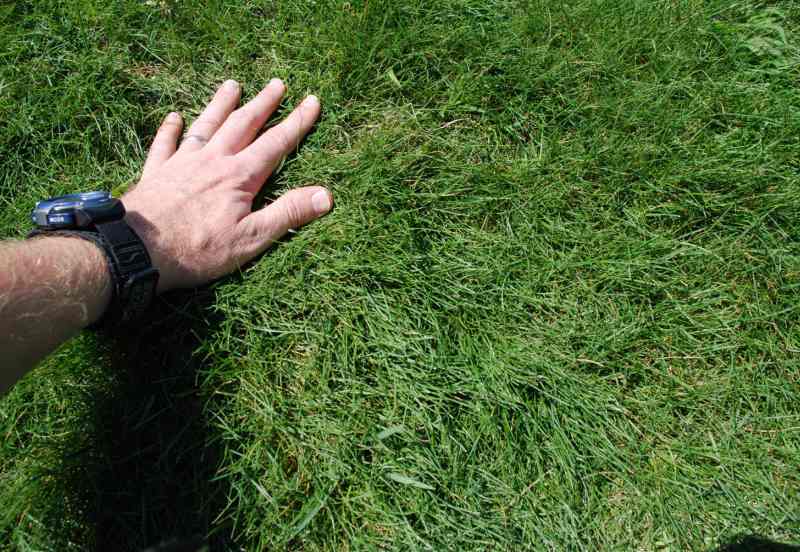
Aaron J. Patton, Ph.D. / Turfgrass Extension Specialist at Purdue University
Want to have a lawn for the kids to run on? For the dogs to scamper about? To host lawn parties for family and friends? Fine fescue is NOT for you.
But the fine fescues (creeping red fescue, hard fescue, and Chewings fescue are the ones suited for Vermont) are being used more than ever because of their strengths: They are known for their shade, drought, salt, and cold tolerance, all things that matter to the growing of grass in Vermont.
Classification: Cool-season grass
Spreads by: Creeping red fescue spreads by rhizomes, while other fine fescues are bunch-type grasses, such as Chewings, hard, and sheep fescues.
Shade tolerance: Moderate to High, depending on species
Drought tolerance: Moderate to High, depending on species
Foot traffic tolerance: Low to Moderate, depending on species
Maintenance needs: Low fertilizer and mowing needs
Mowing height: Set mowing height between 2.5 and 4 inches, depending on species.
Potential for disease: Moderate. Common diseases include red thread, leaf spot, dollar spot, summer patch, and powdery mildew.
Soil pH: 6-6.5
Soil type: Will not perform well in wet soil conditions. Prefers drier soils and tolerates a wide range of soil types and fertility.
Grass Seed Options:
– Outsidepride Legacy Fine Fescue Grass Seed (5 lbs.)
– Eretz Creeping Red Fine Fescue Seed (choose your size)
– Outsidepride Creeping Red Fine Fescue Grass Seed (25 lbs.)
– Outsidepride Hard Fine Fescue Grass Seed (10 lbs.)
Perennial Ryegrass
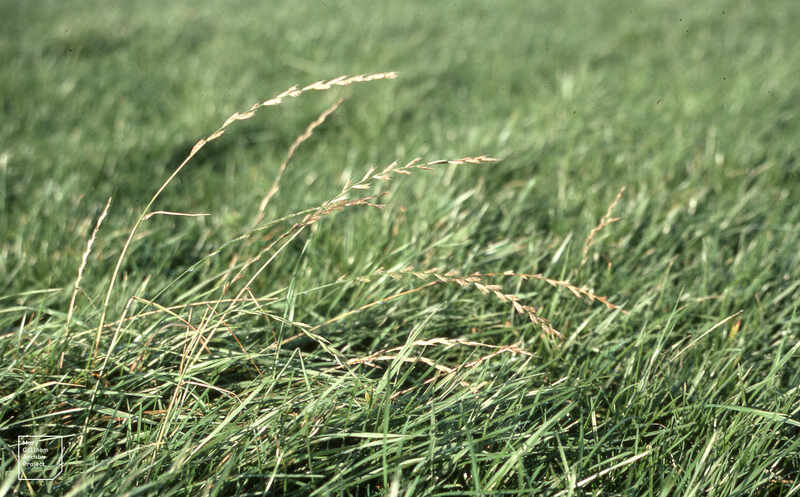
Photo Credit: Dr Mary Gillham Archive Project / Flickr / CC BY 2.0
Perennial ryegrass grows quickly, but doesn’t recover from the kids playing on it or you hosting a lawn party as quickly as Kentucky bluegrass. It doesn’t do well in shade and is susceptible to diseases such as brown patch, Pythium blight, dollar spot, red thread, and rust. It is a good option for overseeding.
Perennial ryegrass grows low, so it needs less mowing than other grasses. It is a good choice for a home lawn if you like to take weekend trips (and skip a turn in any mowing or landscaping).
A pro’s tip: Cultivars are being developed that contain fungal endophytes. Look for those; they will do better in fighting off insect pests.
Classification: Cool-season grass
Spreads by: Has a bunch-type growth habit
Shade tolerance: Low
Drought tolerance: Low
Foot traffic tolerance: High
Maintenance needs: Moderate mowing and fertilization requirements. Thatch is not significant.
Mowing height: Set mowing height to 1.5 to 2.5 inches
Potential for disease: High. Common diseases include gray leaf spot, red thread, and leaf spot/melting-out.
Soil pH: Can grow in soils with a pH between 5 and 8, but prefers between 6 and 7.
Soil type: Prefers good drainage and fertility, but can tolerate some poor drainage.
Grass Seed Options:
– Outsidepride Perennial Ryegrass Seed (5 lbs.)
– Eretz ProTurf Perennial Ryegrass Fine Lawn Seed (choose your size)
Colonial Bentgrass
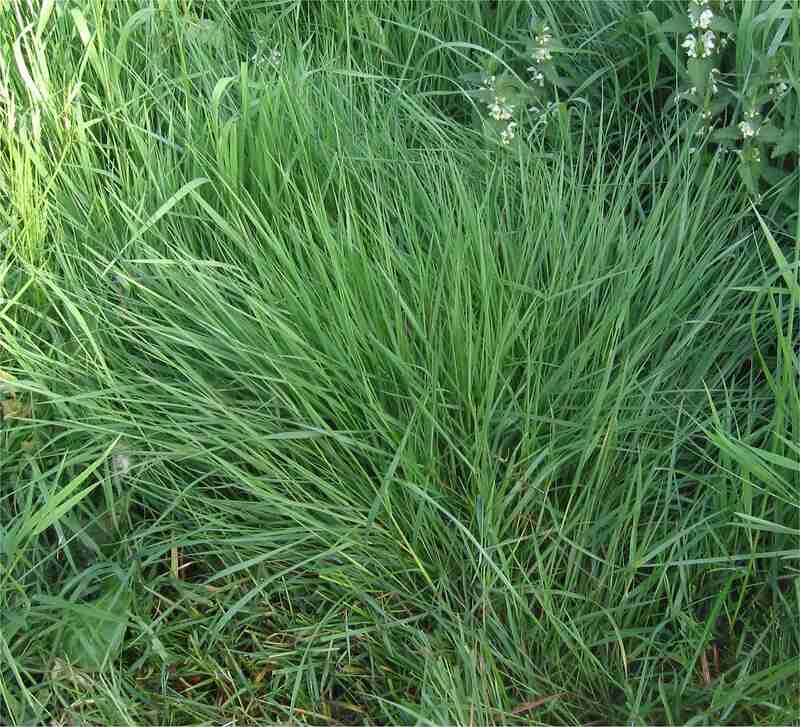
The single greatest trait of colonial bentgrass is that it can be mowed down to a half-inch. Since you really don’t want that for your home (among other things, that would take a lot of mowing), most landscapers use it only on golf courses.
It requires a lot of maintenance, is vulnerable to diseases, and needs a lot of water. But its green color sure looks good, which is why its use is spreading to homes (where homeowners let it grow all the way to an inch in height).
Classification: Cool-season grass
Spreads by: Short rhizomes that may bring about short stolons
Shade tolerance: Moderate
Drought tolerance: Low
Traffic tolerance: Low
Maintenance needs: Moderate to high. Best when mowed short, at least once weekly.
Mowing height: Set the mowing height between 0.5 and 1 inch.
Potential for Disease: Moderate. Susceptible to Fusarium patch in the winter. Vulnerable to Take-all patch when young but severity decreases as turf develops.
Soil pH: 5.5-6.5
Soil type: Tolerates poor soil conditions, but prefers moist and fertile soil.
Warm-Season Native Grasses: Ornamental
Warm-season grasses are making a comeback in Vermont, but only the ones that are native to the state. The non-native warm-season grasses that are common to America (such as Bermudagrass, buffalograss, and Zoysiagrass) grow in the southern U.S.
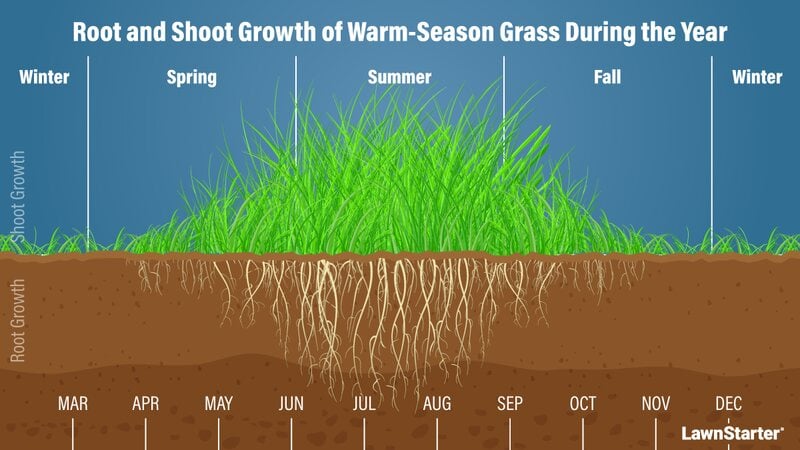
When the Europeans moved into the New England area, they found a lot of grass growing, most of it warm-season grasses. Some say they developed on their own, others say they were encouraged by the Native people. But the settlers got rid of it, planting their cool-season grasses.
All these years later, there are people who are bringing back warm-season grasses to stabilize soil, provide habitat for wildlife, and offer ornamental value. These grasses are deep-rooted, enabling them to last a long time, deal with environmental stresses, and require almost no maintenance once established. Their use also helps people connect with our heritage.
Unlike the cool-season grass species, the warm-season grasses can be planted in the spring. The ideal target date is given as May 15, which would give it 100 days of frost-free growth.
The warm-season native grasses that are most suited to Vermont are:
- Switchgrass (Panicum virgatum L.), especially a cultivar developed specifically for the region, such as Cave-In-Rock, Blackwell, or Shawnee.
- Big bluestem (Andropogon gerardii Vitman). It has an extensive root system, especially the Niagara cultivar.
- Indiangrass (Sorghastrum nutans (L.) Nash). Prairie View is a well-tested cultivar, but one that needs full sun.
Fun Fact: There is a growing interest in turning these grasses into a heat source. They can be formed into pellets, cubes, or briquettes and mixed with wood in fires.
When Should You Plant Grass Seed in Vermont?
The optimum time to plant grass in Vermont is Labor Day.
Why Labor Day?
- Optimal weather: The temperatures are going down and the moisture is going up.
- Less competition: Warm-season weeds aren’t germinating at this point.
- Time to grow: It provides 6 to 8 weeks for grass to become established before winter.
- It’s too late: If you wait past the first week in September.
- What about waiting until spring? The lawn will be stressed by summer temperatures, drought, and weeds.
Challenges to Growing Grass in Vermont
When it comes to selecting the best grass for Vermont, you have to account for two specific items of change: The climate and the use of road salt.
- Climate change is a concern for Vermont. Vermont has warmed by more than 2 degrees in the last century, which is twice as much as the other states. With that comes a greater vulnerability to winter floods and summer drought, according to the EPA.
A pro’s tip: Mow your lawn to 3 inches of height and leave the clippings on it. This will allow the lawn to absorb stormwater. Also, the longer grass will lead to deeper roots, making the grass more drought tolerant.
- Salt remains an issue all the time. There are a number of programs in Vermont to limit the use of salt on the roads, both to protect waterways and roadside grass and plants. Vermont has been using 5,000 tons of salt per year; the Lake Champlain Sea Grant program is pushing to cut that in half.
How to Select the Best Grass Type for Vermont
Can the Lawn Be Used?
The kids can run wild on it: Perennial ryegrass
You can invite the neighbors over: Kentucky bluegrass, tall fescue
A grass to look at, not really to walk on: Fine fescue, switchgrass/big bluestem/Indiangrass, colonial bentgrass
How Often Does It Need Mowing?
It’s a mistake to take a week off: Tall Fescue, colonial bentgrass
It doesn’t grow that fast for lawn grass: Kentucky bluegrass, perennial ryegrass
The growth is slow: Fine fescue, switchgrass/big bluestem/Indiangrass
What Are the Maintenance Needs?
High-maintenance grasses: Colonial bentgrass (it takes watering, fertilizing, dethatching, aeration, AND mowing), Kentucky bluegrass
It can’t be ignored (moderate maintenance): Perennial ryegrass, tall fescue
It is what they mean by low maintenance: Switchgrass/big bluestem/Indiangrass, fine fescue
What If It Is In Shady Areas?
Does fine under the trees: Fine fescue
It should be fine, but check it: Tall fescue, colonial bentgrass
Not made for the shade: Kentucky bluegrass, perennial ryegrass, switchgrass/big bluestem/Indiangrass
Droughts May Be Developing
Grass that should survive: Fine fescue, tall fescue, switchgrass/big bluestem/Indiangrass
It might go dormant, but it will recover: Kentucky bluegrass
Needs water: Perennial ryegrass, colonial bentgrass
Might It Attract Diseases?
It happens a lot: Perennial ryegrass, colonial bentgrass
Be aware of the signs: Kentucky bluegrass
Should be fine: Fine fescue, switchgrass/big bluestem/Indiangrass
You don’t have to worry: Tall fescue
How Does It Do in a Salt-Rich Environment?*
Moderate to high salt tolerance: Slender creeping red fescues, switchgrass/big bluestem/Indiangrass
Be sure to check on it (moderate tolerance): Tall fescue, perennial ryegrass, strong creeping red fescue
Struggles: Kentucky bluegrass, colonial bentgrass, Chewings fescue, hard fescue, and sheep fescue
*Some tolerances vary widely depending on the cultivar.
A Call to Action
Winter lasts for a long time in Vermont, but when it finally goes away, we want to see a lush, green, new lawn waiting for us. A healthy lawn. Whether you want to romp on it or just look at it, you sure want one.
But in order to have a lawn emerge, you have to take action. It can be a do-it-yourself project, one that makes you feel good about yourself. You might also decide it will take more time and expertise than you have. Whichever it is, you have to make that decision, and act on it.
Looking for a Vermont lawn care pro near you? LawnStarter can put you in touch with a pro who knows how to mow, trim, and repair any lawn issues that Vermont’s winter may bring your way.
Additional sources:
University of Vermont Extension
Main Image Credit: Pxfuel
LawnStarter participates in the Amazon Services LLC Associates Program, an affiliate advertising program. LawnStarter may earn revenue from products promoted in this article.

